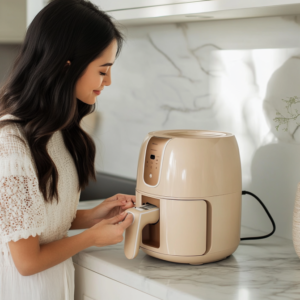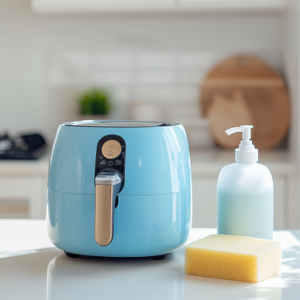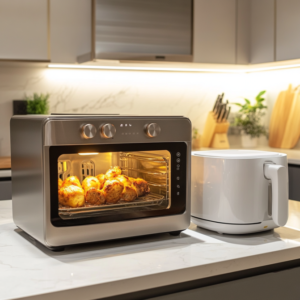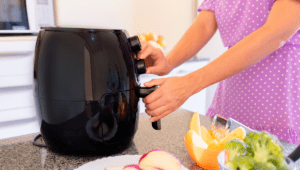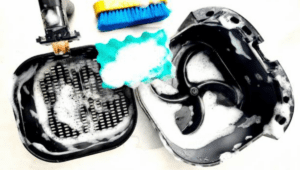“Cooking is an art, but every artist needs the right tools.”
When creating your favorite meals, your cookware can make all the difference.
Whether you’re whipping up a quick dinner or preparing a feast, having the right *cookware options* can save time, enhance flavor, and make the whole experience smoother.
This guide explores the essential kitchen tools you need, breaking down which pots, pans, and specialty items will help you master your culinary game.
Ready to upgrade your kitchen? Let’s dive into the cookware that will take your meals to the next level.
1. Non-Stick Cookware: The Easy-to-Clean Choice

Non-stick cookware is a favorite in many kitchens because cooking and cleanup are simple. These pans are perfect for cooking delicate items like eggs, pancakes, and fish without worrying about food sticking to the surface. They require less oil, making them ideal for those who want to reduce fat in their cooking.
However, it’s essential to care for your non-stick pans properly. Avoid using metal utensils that can scratch the surface, and opt for silicone or wooden spatulas instead.
- Great for cooking low-fat meals due to minimal oil requirement.
Want more healthy recipes? Check out the Best Air Fryer Cookbook for Beginners UK [TOP 7 Reviewed] on Amazon for simple, delicious meals!
2. Stainless Steel Cookware: Durable and Versatile
Stainless steel is a classic option and one of the most durable choices. These pots and pans can handle high heat, making them great for searing, browning, and deglazing. They are also oven-safe, so you can start a dish on the stovetop and finish it in the oven.
One downside of stainless steel cookware is that food can sometimes stick, especially when cooking with little oil. However, proper preheating and cooking techniques can minimize this issue.
3. Cast Iron: The Heavy-Duty Performer
Cast iron cookware is a kitchen workhorse. Known for its heat retention and durability, cast iron is perfect for slow cooking, frying, and even baking. With proper care and seasoning, cast iron pans can last for generations. Cast iron can also be used on the stovetop, oven, grill, or campfire.
The main drawback of cast iron is its weight. These pans are heavy, so they might not be the best choice if you prefer lightweight cookware.
4. Ceramic Cookware: Eco-Friendly and Non-Stick
Ceramic cookware has gained popularity as an eco-friendly alternative to traditional non-stick cookware. The ceramic coating provides a smooth, non-stick surface that requires little to no oil. Ceramic pans are free from chemicals like PFOA and PFTE, making them a healthier option for cooking.
However, ceramic cookware can be more prone to chipping and scratching than other options. To extend its lifespan, be sure to handle it with care and avoid high heat.
5. Copper Cookware: Stylish and Fast-Heating
Copper cookware is often considered a luxury item, not only because of its beautiful appearance but also due to its fast and even heating properties. Copper is incredibly responsive to temperature changes, making it ideal for precision cooking. You can quickly raise or lower the heat and see instant results.
The downside to copper cookware is the maintenance required to keep it looking great. It tends to tarnish over time and must be polished regularly. Copper pans are also on the pricier side compared to other options.
6. Aluminum Cookware: Lightweight and Affordable
Aluminum cookware is a great budget-friendly option, especially for beginner cooks. It heats up quickly and is lightweight, making it easy to handle. However, bare aluminum pans can react with acidic foods, so adopting anodized aluminum offers a more durable, non-reactive surface.
7. Enameled Cast Iron: The Best of Both Worlds
Enameled cast iron cookware combines the durability of cast iron with the non-stick, easy-to-clean properties of an enameled coating. These pans are great for slow-cooking, braising, and baking while being easier to clean than traditional cast iron. Plus, they come in various attractive colors, adding a pop of color to your kitchen.
Enameled cast iron does come at a higher price point, but its versatility and ease of use make it worth the investment.
8. Carbon Steel: Lightweight and Heat-Retentive
Carbon steel cookware is similar to cast iron in its heat retention abilities, but it is much lighter and easier to handle. It’s a favorite among professional chefs for cooking at high heat and achieving excellent searing. Over time, carbon steel pans develop a natural non-stick surface as they become seasoned, similar to cast iron.
However, carbon steel requires seasoning and regular care to maintain its non-stick properties, so be prepared for a little extra effort when maintaining this cookware.
9. Glass Cookware: Great for Baking and Reheating
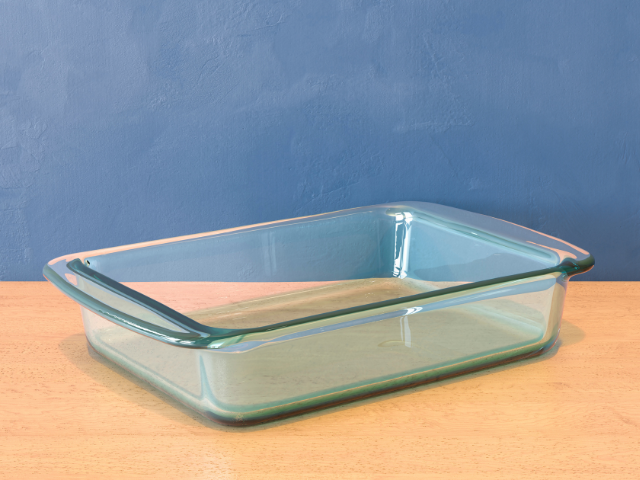
Glass cookware is ideal for baking casseroles, lasagnas, and desserts. It’s also a fantastic option for reheating meals, as it doesn’t retain odors or stains. While glass is unsuitable for stovetop cooking, it excels in the oven and microwave.
Just be cautious with temperature changes—glass can shatter if exposed to extreme shifts in temperature, so avoid placing a hot glass dish directly into cold water.
10. Pressure Cookers and Air Fryers: Modern Must-Haves
For the modern home cook, pressure cookers and air fryers have become indispensable tools. Pressure cookers speed up the cooking process by using high pressure to cook food faster, while air fryers allow you to achieve crispy, fried-like results using significantly less oil.
If you want to simplify meal prep, an air fryer is an excellent addition to your cookware collection. From crispy chicken wings to roasted vegetables, the possibilities are endless.
Looking for easy air fryer recipes? Check out the Best Air Fryer Cookbook for Beginners UK [TOP 7 Reviewed] and start cooking healthier meals today!
Caring for Your Cookware
Caring for them properly will ensure they last for years, no matter which cookware options you choose. Here are a few tips:
- Non-Stick Cookware: Hand wash with mild soap and a soft sponge. Avoid using metal utensils.
- Cast Iron: Rinse with hot water and dry thoroughly. Apply a thin layer of oil to maintain seasoning.
- Stainless Steel: Use a non-abrasive cleaner for tough spots and avoid high heat to prevent discoloration.
- Ceramic and Copper: Use non-abrasive cleaners and avoid metal utensils to prevent scratching.
Conclusion
Choosing the right cookware options for your kitchen can make all the difference in your cooking experience.
From durable stainless steel to quick-heating non-stick pans, each option has its benefits.
Whether you’re cooking up a gourmet meal or a quick weeknight dinner, having the right tools will make cooking more accessible and enjoyable.
Discover the Ultimate Air Fryer Cookbook for Beginners and enjoy a variety of mouthwatering, easy-to-make recipes that fit perfectly into your healthy lifestyle! Plus, don’t forget to check out our recently published articles for more tips, reviews, and air fryer inspiration.




